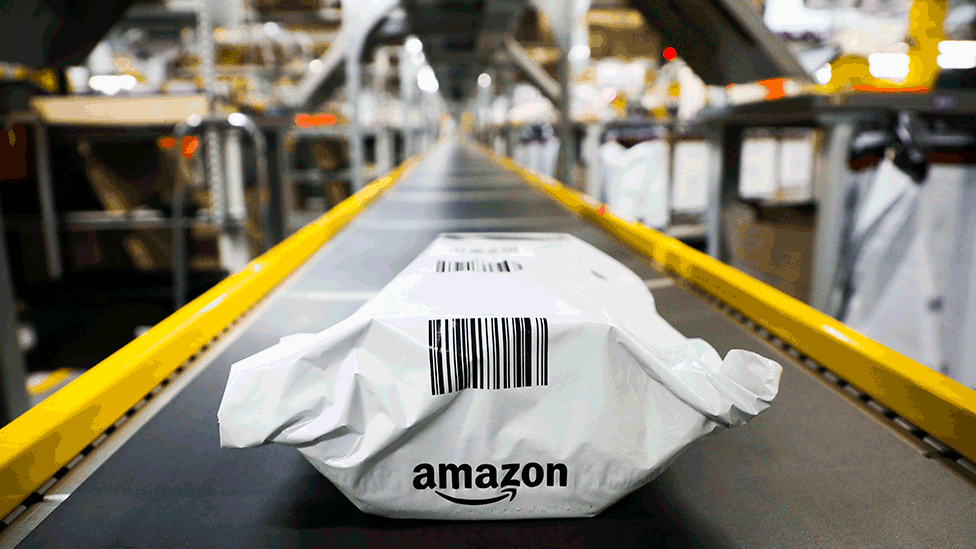
Earlier this week, we heard that Amazon founder Jeff Bezos will step down as CEO of the e-commerce giant he started in his garage nearly 30 years ago.
He will give way to Andy Jassy, currently head of Amazon’s cloud computing company, to take over day-to-day control.
However, billionaire Bezos will not hand over the reins but assume the role of executive chairman.
Today, Amazon is one of the most valuable publicly traded companies in the world, and Mr. Bezos is vying with Tesla’s Elon Musk for the title of the world’s richest man.
What started out as a small online bookstore has grown into a global phenomenon, spanning home delivery, cloud computing, advancements in artificial intelligence, and streaming movies and sports.
And that has sparked Amazon a lot of criticism, ranging from allegations it contributed to the High Street’s demise to complaints about working conditions in the massive warehouses.
So how is the Amazon empire built?

Amazon’s innovation is clearly reflected in the financial results.
In 2018, it became the world’s second $ 1 trillion publicly traded company, after Apple, and today has the third-highest market valuation in the US, after Apple and Microsoft.
The enormous success of the online giant is also reflected in its turnover.
Revenue for 2020 was $ 386 billion, up from $ 280 billion a year earlier. Net income has nearly doubled to $ 21 billion.




Mr. Bezos’s success is due to the company’s global expansion, but mainly due to expanding into a wide variety of other sectors.
Video streaming services and devices, cloud services, and most recently groceries (with the acquisition of Whole Foods Market) have allowed the company to compete directly with technology giants such as Facebook, Apple, Google and Netflix.




And it all started with selling books.
1995: Amazon starts online book sales
“When we started selling books four years ago, everyone said, ‘Look, you’re just computer guys and you don’t know about selling books.’ And that was true, ”said a young Jeff Bezos in 1999.




However, the vast storage space the company had in the US at the time allowed Amazon to become a leader in the industry and to offer a wider selection of books than its physical rivals.
Then ebooks came and Amazon was smart enough to become a major player in that market too.
1999 – Amazon becomes the largest online sales platform in the world
In the late 1990s, Amazon decided to start selling other goods, starting with music and DVDs.




Soon Bezos’ empire grew with electronics, toys and kitchenware.
The growing network of US warehouses helped expand what the company could offer, dramatically increasing popularity with customers.
Ten years later, Amazon had become the largest online seller in the US and around the world.
2005 – Amazon launches Prime membership
After founding Amazon Marketplace in 2000 – which opened the platform to thousands of small businesses – Amazon felt the need to improve its delivery service for loyal customers.




Amazon Prime was launched in 2005 and offers faster shipping for select items. This stimulated the sale of all kinds of goods.
More than 100 million paying customers are now members of the Amazon Prime subscription service, which also offers video and music streaming.
It is the second largest paid membership program in the world.
2007- Amazon launches its first consumer product: the Kindle
Amazon has never forgotten the origins of book sales. As ebooks started to gain popularity, Bezos launched the Kindle in 2007 and eventually became the world leader in the industry.




Amazon’s smart devices division grew exponentially and faced fierce competition from Apple and Google in early 2010.
However, Amazon was the first company to launch a smart device – the Echo speaker, equipped with the company’s own artificial intelligence system, Alexa.
It is now the third largest seller of smart devices in the US.
Today, Amazon’s future looks a bit more complicated than just selling products on the Internet.
After successfully dominating online retail, the company has set its sights on expanding its services – and perhaps surprisingly to physical stores – to create a new way to shop.
